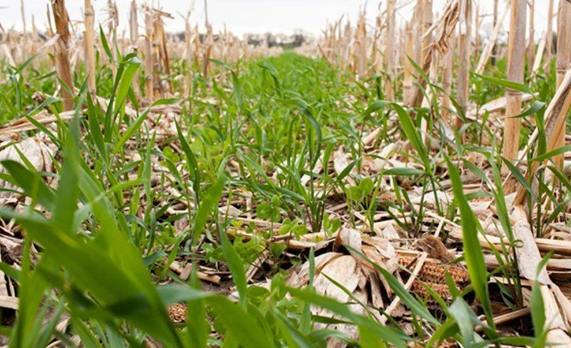
Cover crops can benefit soil health, reduce erosion and protect primary crops from weeds, pests and pathogens. Some cover crops can be used as livestock forage or can provide an additional revenue stream for farmers. The southern U.S. has been slower than other regions to adopt cover cropping.
In 2019, the Southern Cover Crops Council initiated a multistate project to facilitate research, outreach and education to empower southern farmers to expand their use of cover crops to increase farm profitability and environmental stewardship.
Bringing together experts from multiple states and disciplines is key to providing farmers across the South with cover crop varieties, information and tools that suit their needs. The multistate framework enables resource sharing and long-term coordination that improves research efficiency and reliability.
Standardizing Cover Crop Research
Project members are working together to standardize crop management, data collection and analysis methods across locations so that results are more reliable. They are identifying a common set of biological, physical, chemical and economic measures that can be applied across crop and cover crop combinations throughout the South.
Evaluating Cover Crop Varieties & Benefits
Evaluation of cover crop varieties across multiple locations helps showcase the full potential of cover crop benefits. Because the South encompasses a range of landscapes, soil types and production systems, conducting trials in multiple locations has helped provide farmers with site-specific recommendations. For example, researchers have:
- Identified top-performing winter legume cover crop species for southern farms (Alabama, Arkansas, Florida, Georgia, Kentucky, Louisiana, Maryland, North Carolina, Tennessee, Texas and Virginia)
- Determined the optimal seeding rates and termination dates for three cowpea cover crop varieties (Alabama, Florida, Georgia, Kentucky, Louisiana, Puerto Rico, Texas and Virginia)
- Helped determine the effect of rye cover crop termination timing on pests, diseases and corn crop performance (Florida, Kentucky, North Carolina, Texas and Virginia)
- Evaluated the potential for sowing cover crops on ridge-tilled soybean fields (Mississippi and Texas)
- Investigated the effects of cover crops on soil moisture, nutrient cycling and soil microbiology in various agricultural landscapes in the South
Developing Decision Support Tools
Project members are contributing to the development of a cover crop selector tool and a cover crop seeding rate calculator to assist farmers.
Fostering Relationships
Conferences, farmer think tanks, and peer-to-peer networking provided opportunities for farmers, scientists, Extension agents and federal agencies to share needs and solutions. These relationships are key to successful integration of cover crops.
Guiding Future Research
Focus groups, interviews and farmer think tanks improved understanding of factors that influence cover crop adoption, providing valuable insights for future research, outreach and education efforts.
A review of existing literature by project members at the University of Florida showed the historical trajectory of cover crop research and provided a knowledge map that will help guide future research.
Project members are teaching and training graduate students and postdoctoral fellows, preparing the next generation of scientists and industry professionals with hands-on fieldwork, data analysis and networking experience.
The Cover Crops for Sustainable Southern Agroecosystems project is supported in part by USDA NIFA through Hatch Multistate Research Fund allocations to participating State Agricultural Experiment Stations at Land-grant Universities.
Participating institutions include Auburn University, Arkansas Cooperative Extension, Clemson University, University of Florida, University of Georgia, University of Kentucky, Lincoln University, Louisiana State University, Mississippi State University, University of Missouri, University of Puerto Rico, University of Tennessee, Texas A&M AgriLife Research, Virginia Tech and Virginia State University. Learn more about the work.


















